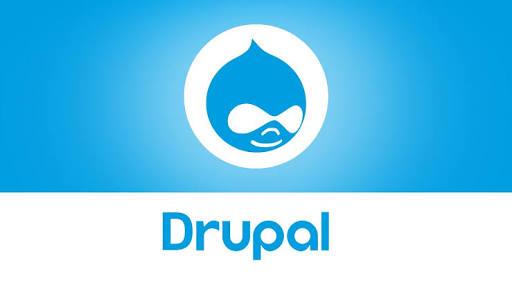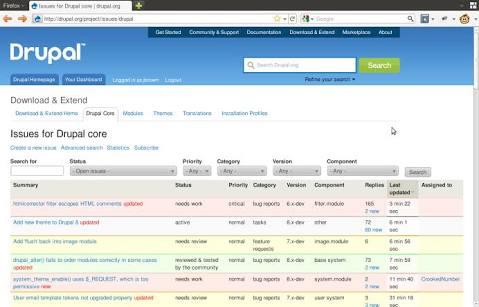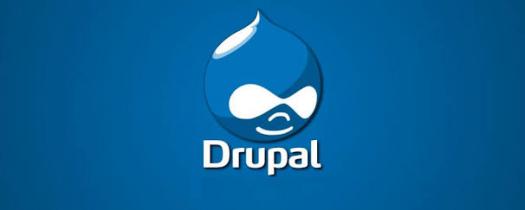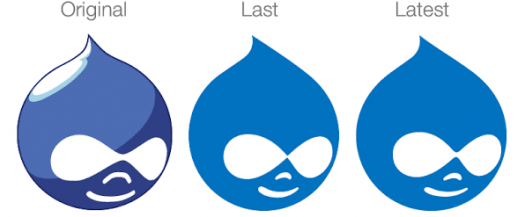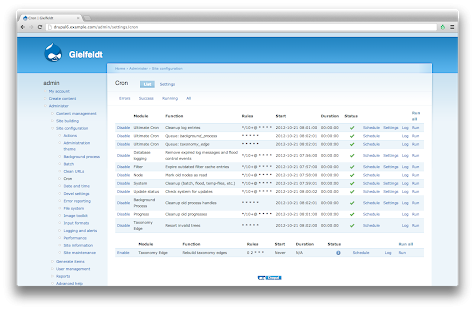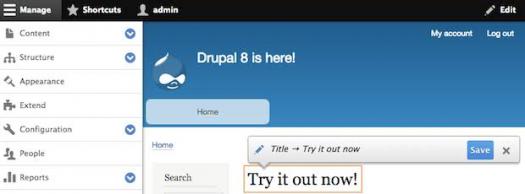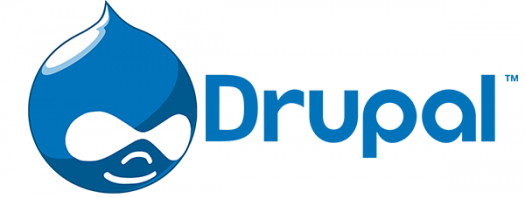Do You Know Drupal?

I want to see if you'll pass this quiz with flying colors or not. The topic is Drupal, a framework with some impressive functions. If you're feeling challenged, let's go then.
- 1.
How many percentage of the web does Drupal provide a back-end for?
- A.
7%
- B.
2.3%
- C.
2.9%
- D.
4%
Correct Answer
B. 2.3%Explanation
Drupal provides a back-end for 2.3% of the web. This means that out of all the websites on the internet, only a small fraction, specifically 2.3%, use Drupal as their content management system (CMS) to manage the back-end of their websites. Drupal is a popular open-source CMS known for its flexibility and scalability, but it is not as widely adopted as other CMS platforms like WordPress or Joomla.Rate this question:
-
- 2.
When was it initially released?
- A.
2000
- B.
2001
- C.
2002
- D.
2003
Correct Answer
A. 2000Explanation
The initial release of the product was in 2000.Rate this question:
-
- 3.
Which month, 17 years ago, was it released?
- A.
March
- B.
May
- C.
June
- D.
October
Correct Answer
B. MayExplanation
May is the correct answer because it is the only option that is a month. Since the question asks for the month when something was released 17 years ago, the answer cannot be March, June, or October as those are not months. Therefore, May is the only logical answer.Rate this question:
-
- 4.
Which version of Drupal was released in January 2018?
- A.
8.4.4
- B.
4.8.9
- C.
5.6.7
- D.
2.9.0
Correct Answer
A. 8.4.4Explanation
In January 2018, the version 8.4.4 of Drupal was released.Rate this question:
-
- 5.
In which programming language was it written?
- A.
Pascal
- B.
HTML
- C.
Java
- D.
PHP
Correct Answer
D. PHPExplanation
The correct answer is PHP because PHP is a popular programming language used for web development. It is often used to create dynamic web pages and can interact with databases to retrieve and store information. PHP code is embedded within HTML, allowing for seamless integration of server-side scripting with front-end design.Rate this question:
-
- 6.
How large is Drupal?
- A.
56mb
- B.
30mb
- C.
80mb
- D.
50mb
Correct Answer
C. 80mbExplanation
Drupal is a content management system (CMS) that provides a platform for building and managing websites. The size of Drupal refers to the amount of disk space required to install the CMS and its associated files. In this case, the correct answer is 80mb, indicating that the Drupal installation requires approximately 80 megabytes of disk space.Rate this question:
-
- 7.
What do you know about the license of Drupal?
- A.
GPLv2.5
- B.
GPLv3
- C.
GPLv2
- D.
GPLv3.5
Correct Answer
C. GPLv2Explanation
The correct answer is GPLv2. Drupal is an open-source content management system (CMS) that is released under the GNU General Public License version 2 (GPLv2). This license allows users to freely use, modify, and distribute the software, as long as they also release any modifications they make under the same license. GPLv2 ensures that Drupal remains free and open-source, promoting collaboration and innovation within the Drupal community.Rate this question:
-
- 8.
What's the standard release of Drupal called?
- A.
Drupal
- B.
Drupal Core
- C.
Drupal Light
- D.
Drupal X
Correct Answer
B. Drupal CoreExplanation
The standard release of Drupal is called Drupal Core. This is the base version of Drupal that includes essential features and functionality. It is the foundation upon which additional modules and themes can be added to customize and extend the functionality of a Drupal website. Drupal Core is the most widely used and supported version of Drupal, making it the standard release for the Drupal community.Rate this question:
-
- 9.
When did Drupal become open source?
- A.
1998
- B.
2003
- C.
2001
- D.
2002
Correct Answer
C. 2001Explanation
In 2001, Drupal became open source. This means that the source code of Drupal, a content management system, was made available to the public for free. Prior to this, Drupal was a closed-source project, meaning that only a limited number of people had access to the source code. By becoming open source, Drupal allowed a larger community of developers to contribute to its development and customization, leading to its growth and popularity as a widely used CMS today.Rate this question:
-
- 10.
Who wrote the Drupal originally?
- A.
Jake Shaw
- B.
Linda Shaw
- C.
Dries Buytaert
- D.
Howard Dean
Correct Answer
C. Dries BuytaertExplanation
Dries Buytaert is the correct answer because he is the person who originally wrote Drupal. Drupal is an open-source content management system that was first developed by Buytaert in 2000. He created it as a message board for his friends, and it eventually evolved into the widely used platform that it is today. Buytaert continues to be involved in the development and leadership of Drupal.Rate this question:
-
Quiz Review Timeline +
Our quizzes are rigorously reviewed, monitored and continuously updated by our expert board to maintain accuracy, relevance, and timeliness.
-
Current Version
-
Mar 20, 2023Quiz Edited by
ProProfs Editorial Team -
Mar 03, 2018Quiz Created by
Livyn
 Back to top
Back to top



